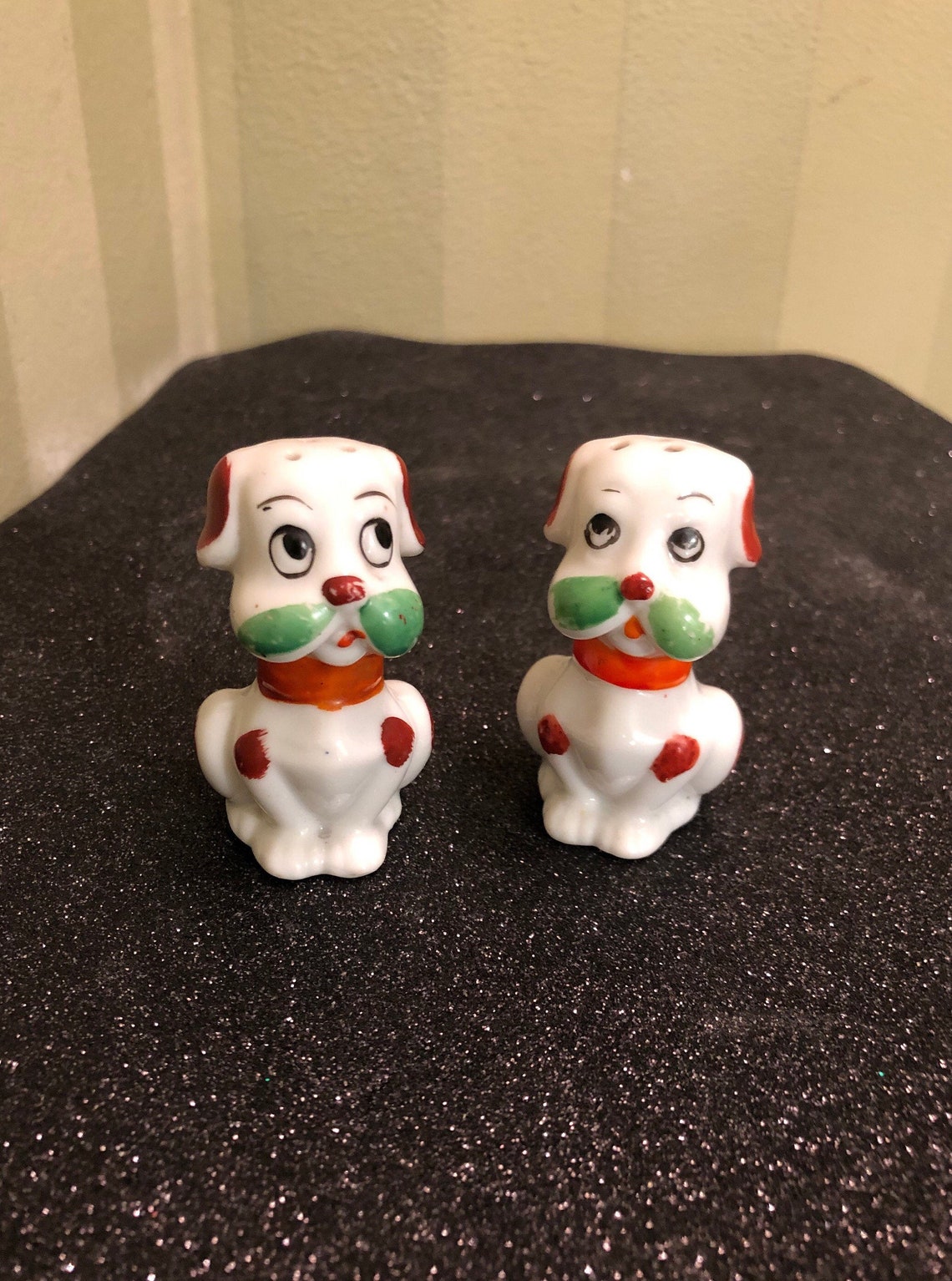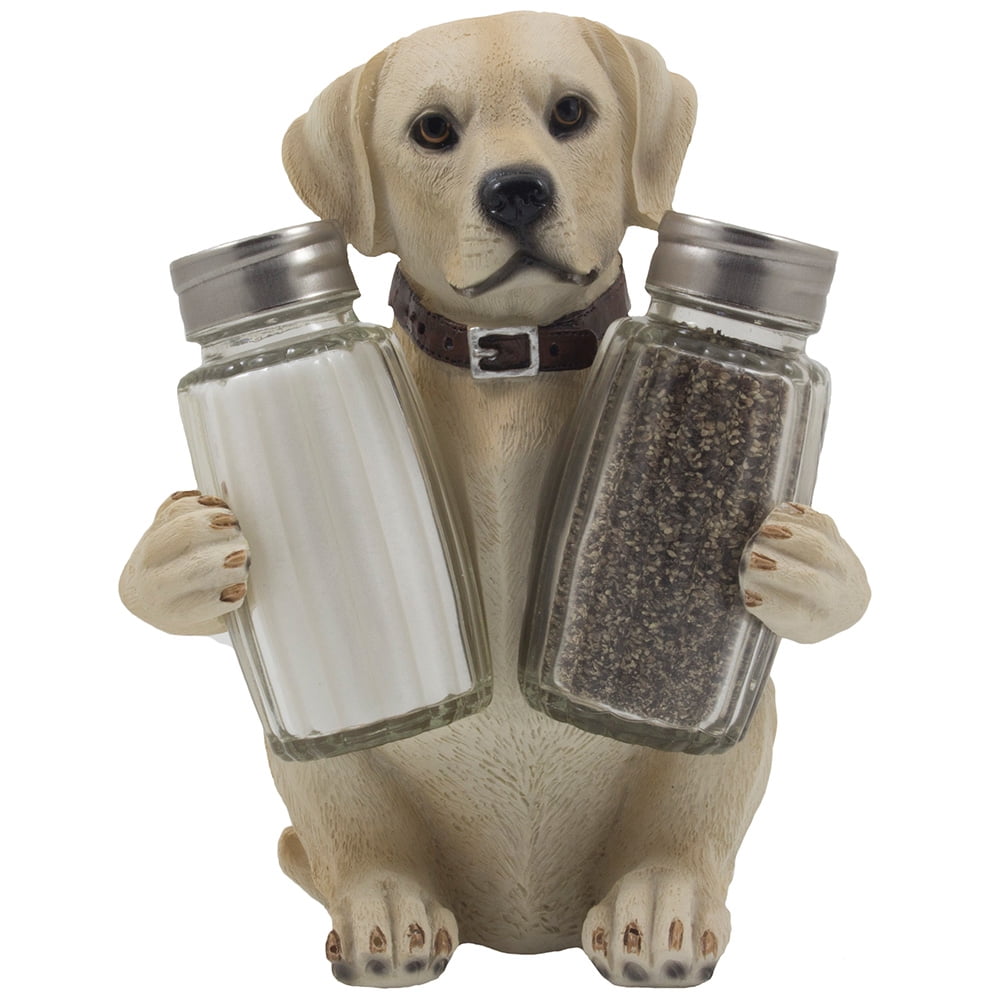While a small amount of salt may not cause a problem, dogs require much less sodium than people, and too much can be toxic. Toxicity can occur when a dog ingests 2 to 3 grams of sodium for every kilogram of body weight.

Salt/Pepper Vintage Japan Dog Salt and Pepper Shakers Etsy
In moderation, salt is good for dogs, but there are a lot of factors that can affect this answer.

Can dogs have salt and pepper. Puppies need about 4x that amount. How much salt and pepper can a dog have? Fox, you should never add seasoning or salt to the peppers or feed your dog ones that have been mixed with onions or garlic, as those ingredients are toxic to dogs.
Symptoms of too much salt include increased thirst, vomiting, diarrhea, high body temperature, tremors, and seizures. Remember, too much salt is bad for your dog. And almost every dog breed is susceptible to salt toxicity.
Are eggs safe for dogs? Additionally, the excess salt can cause dehydration which could have other adverse effects such as diarrhea, vomiting, frequent urination, depression, tremors, seizures, and high temperature. Too much salt can cause vomiting, diarrhea, muscle tremors, incoordination, and seizures in dogs.
There is really nothing special about having a lot of it in your meal, but when dogs eat these. Salt poisoning can damage the dog’s kidneys. While salt and pepper are often used together in the kitchen, you don’t want to give these ingredients to your dog.
How much salt is ok for a dog? With salt, you’re not trying to make sure you feed the maximum, but making sure you don’t. Yes, dogs can eat mashed potatoes, but they can’t have the salt, pepper, garlic, milk, butter and other ingredients added to them.
No, salt is not recommended for dogs. Most dogs won’t want to eat either one in excessive amounts. No, dogs can’t have salt and pepper because it is harmful to them.
“some dogs will be fine with it, and some won't,” says dr. Can dogs eat black pepper and salt? Dog facts / 5 minutes of reading.
Salt is dangerous for dogs since it increases the risk of salt poisoning. Adult dogs need about 0.06% sodium and 0.09% chloride in their food. Too much salt can cause vomiting, diarrhea, and nausea in dogs.
However, your dog can have small amounts of black pepper without having any aversive reactions or major problems. If you’re using a very small amount of black pepper in a recipe, it is okay to give your dog some of the leftovers, as long as the pepper is diluted. Actual requirements for salt are broken down into sodium and chloride (the elements that make up salt) components.
Cranberries are popular in holiday dishes and you can share them with your dog. Yes, your dog definitely can eat salt and needs a certain amount for bodily functions. For this reason, you should avoid feeding your dog overly salty things, and definitely skip the salt if you’re cooking for your dog.
Beug recommends a ¼ teaspoon for small dogs, ½ teaspoon for medium dogs and 1 teaspoon for large dogs per day, mixed into food. The outer skin portion of the bell pepper may be tough for your dog to chew and/or digest when the pepper is still raw. Too much salt makes your dog thirst, which means more trips outside.
In fact, dogs hate the smell of black peppers and cayenne pepper. It’s safe to let your dog eat food that is mildly flavored with salt and pepper. Keep sugary cranberry sauces, relishes and similar dishes out of reach.
This is equivalent to about 0.35 to 0.53 teaspoons of salt for every 2.2 pounds of body weight. Some dog owners even use these spices as deterrents for canine chewing. Salt and pepper are the cornerstone of any spice cabinet but don't reach for them when you are preparing food for your pup.
So, why would you want to feed your dogs with foods that are seasoned with black peppers (and salt) in the first place? As you can see, dogs don’t really need a lot of extra spices and flavors in their food. If you discover that your dog got into salt and pepper and you notice them acting strange, call your veterinarian immediately.
Yes, dogs can eat a small amount of black pepper, but it doesn’t mean that they like it. Dogs can’t handle salt in the same way that we can as it’s very toxic to them, and overeating salt can even cause sodium ion poisoning in your dog. The short answer is it.
The skin isn’t good for them either, so peel. At 4 grams, or 0.7 teaspoons, per kilogram, or 2.2 pounds, salt consumption can be fatal. As a rule of thumb, dr.
You can steam the pepper to soften the skin, though. Although dogs can eat a little salt, too much salt is harmful. Many cats are attracted to salty flavor, being one of the three tastes they can detect.
Salt and pepper are seasoning to add flavor to the food. Remember, dogs are not supposed to eat salt, pepper, onions and other types of spices that are often put into eggs by humans. Now that you know the answer to “can dogs eat eggs”, are these eggs safe for a dog?
Should dogs have salt in their food? He may not like the tart flavor, though. The answer is that black pepper is not safe for dogs to have.
Avoid feeding your dog salt and black pepper. Feeding them food recommended by your veterinarian will give them all the nutrition they need. When you see a lot of it on your plate or bowl, you know that there’s something wrong with the quality of the food being served.
No, salt is not recommended for dogs. This guide to salt and pepper and dogs has a lot more information. Even though they can eat salt in pepper in small amounts doesn’t mean they should.
“the key is to remember that more is not.